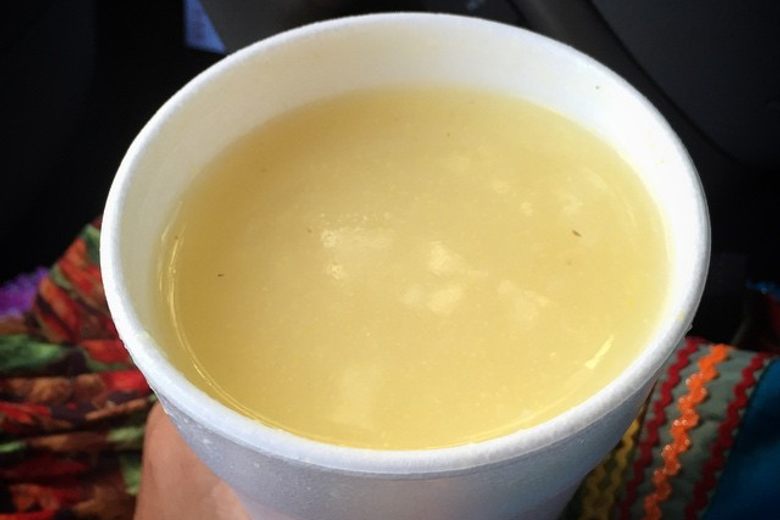It’s always fun to look back into history to try new things. Cooking is one of the best ways to connect to the past, whether through bread or meat. Ask yourself, if you lived in pioneer times and couldn’t just hop in the car and go to McDonald’s, what would you have for supper?
While some people wrote down their recipes, the formatting was very different than what we’re used to. When you decide you want to try to bake a plate of cookies, you’ll find the recipe, and the list of ingredients greets you immediately. Then you’ll see steps broken down with a numbered line, each describing the best way to prepare the cookies.
In the early 19th century, there was no such list, and cooking times and temperatures were vague, at best – after all, there’s no dial for “350 degrees” on a 19th-century wood-burning stove! The recipes would often come across as a paragraph or two written as if a person were quickly jotting down what’s in their head. Would you be able to follow these recipes to make something yummy? Well, here’s your chance to try!
What Soldiers Would Eat
Soldiers at Fort King had very simple fares and rations. They would be provided pork, salted beef, or bacon. Bread, flour, hard bread, or cornmeal would be starches. By 1825 they also got peas or beans, and eventually, coffee was added to the rationing.
Bread was a great way to keep full. In the 18th century, a woman named Hannah Glasse produced a cookbook called “The Art of Cookery Made Plain and Easy.” This book has been in print for over 200 years and was likely one of the ones that was used daily. If you want the modern-day recipe, you can find it here, however, the cooks of the 1800s would follow a recipe that looked more like this:
Pioneer Bread
“Take three quarts of water, and one of milk; in winter scalding hot, in summer a little more than milk warm; season it well with salt, then take a pint and a half of good ale yeast not bitter, lay it in a gallon of water the night before, pour it off the water, stir in your yeast into the milk and water, then with your hand break in a little more than a quarter of a pound of butter, work it well till it is dissolved, then beat up two eggs in a bason, and stir them in; have about a peck and a half of flour, mix it with your liquor; in winter make your dough pretty stiff, in summer more slack: so that you may use a little more or less flour, according to the stiffness of your dough: mix it well, but the less you work the better: make it into rolls, and have a very quick oven. When they have lain about a quarter of an hour, turn them on the other side, let them lie about a quarter longer, and then take them out and chip all your French bread with a knife which is better than rasping it, and make it look spungy and of a fine yellow, whereas the rasping takes off all that fine colour, and makes it look too smooth. You must stir your liquor into the flour as you do for the pie-crust. After your dough is made, cover it with a cloth, and let it lie to rise while the oven is heating.”
Foods Americans Would Eat
During the Civil War, Florida was the main supplier of beef for the United States Army. This is why it’s no surprise that some of the most popular recipes from the time included beef. One of the more popular recipes was “Alamode Beef.” The recipe we share is from “American Cookery,” which was the first American cookbook written by the “orphan” Amelia Simmons in 1796. This book boasted 47 pages with recipes for roasts, stews, and all manners of pies. The recipes were very British but adapted to include ingredients that were native to the American land. What was interesting was the book was something that appealed to women who lived in sometimes-trying circumstances. Here we include the recipe from “American Cookery” by Amelia Simmons. You can read more about the book and see more recipes here. If you’re interested in a recipe for Alamode Beef that is in more modern terms, Food and Wine has a recipe you can try here.
Alamode Beef
“Take a round of beef, and stuff it with half pound pork, half pound butter, the soft of half a loaf of wheat bread, boil four eggs very hard, chop them up; add sweet marjoram, sage, parsley, summersavory, and one ounce cloves pounded, chop them all together, with two eggs very fine, and add a gill of wine, season very high with salt and pepper, cut holes in your beef, to put your stuffing in, then stick whole cloves into the beef, then put it into a two pail pot, with sticks at the bottom; if you wish to have the beef round when done, put it into a cloth and bind it tight with 20 or 30 yards of twin, put it into your pot with two or three quarts of water, and one gill of wine, if the round be large, it will take three or four hours to bake it.”
Foods the Seminole Indians Would Eat
Everyone loves comfort food, and the Seminoles of the 1800s were no different. One of their favorite foods can be considered one of the best comfort foods available. Sofkee is a warm stewed porridge drink that would have been kept over the fire of the cooking chickee and eaten when needed. Sometimes it was given to a guest. A benefit of sofkee is that it is quite heavy and can keep the body sated for a long time.
To go with the dish, they had a special spoon that was carved out of a single piece of wood into a ladle shape, called a sofkee spoon.
Like most of the best comfort foods, sofkee is still popular. It can be made plain or flavored with pumpkin, fruit, or other spices. While the other recipes in this article have been provided in the format they would be in the 1800s, this one is in a modern format. This recipe comes from the Seminole Tribe of Florida’s website.
Sofkee

- 2 quarts of water
- 1 teaspoon baking soda
- 2 cups of white rice
- 3 tablespoon cornstarch
Bring 2 quarts of water to a boil; add 2 cups of rice and 3 tablespoons of cornstarch, stirring occasionally to prevent rice from sticking to the bottom. Boil for approximately 12 minutes, lower the heat then add a teaspoon of baking soda and stir frequently until rice is tender. Set and cool until tolerable temperature.


